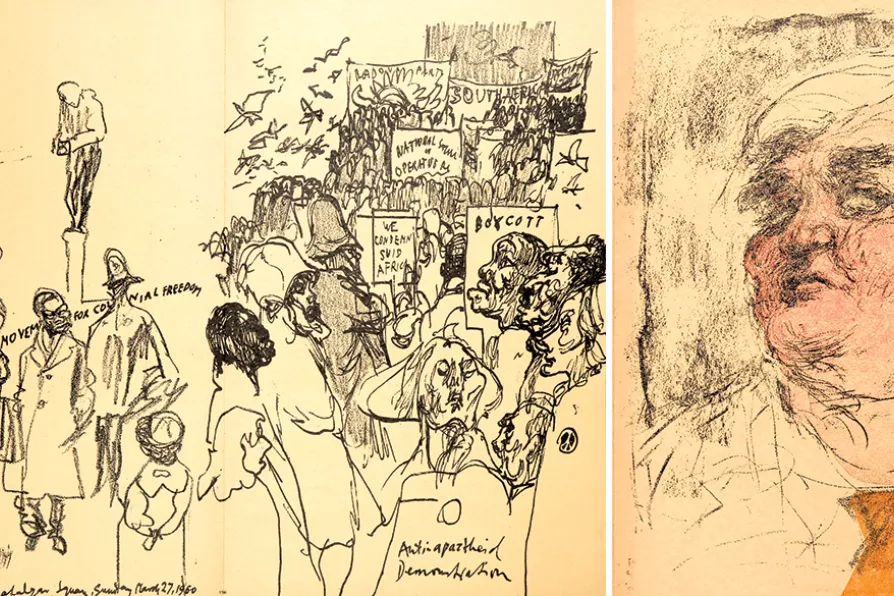RICHARD MURGATROYD enjoys a readable account of the life and meditations of one of the few Roman emperors with a good reputation
Harvest of a hungry pencil
In the 1960s Feliks Topolski revitalised the ancient art of chronicle with panache and gusto. MICHAL BONCZA looks at the work

 (L to R) Public Opinion: Anti-apartheid demonstration in Trafalgar Sq, March 27 1960; Nye Bevan, 1954
[Estate of the Artist]
(L to R) Public Opinion: Anti-apartheid demonstration in Trafalgar Sq, March 27 1960; Nye Bevan, 1954
[Estate of the Artist]
Punks, Princes and Protests: The Chronicles of Feliks Topolski
Arch 158 Hungerford Arches / POSK Gallery, London
THERE is a feel of an impromtu informality of an artist’s studio in this show of Feliks Topolski’s sketches and drawings.
They fill the walls so high that accidental neck twisting is a distinct possibility — you have been warned.
But who was Topolski? He arrived in Britain in 1935 as a graphic correspondent of Wiadomosci Literackie/Literary News — Warsaw’s popular socio-cultural weekly — liked it here and just stayed on setting up a studio under one of the arches of the Hungerford Bridge in London where this exhibition is housed.
Similar stories

JOHN GREEN is stirred by an ambitious art project that explores solidarity and the shared memory of occupation

This is poetry in paint, spectacular but never spectacle for its own sake, writes JAN WOOLF

ANDY HEDGECOCK relishes two exhibitions that blur the boundaries between art and community engagement











